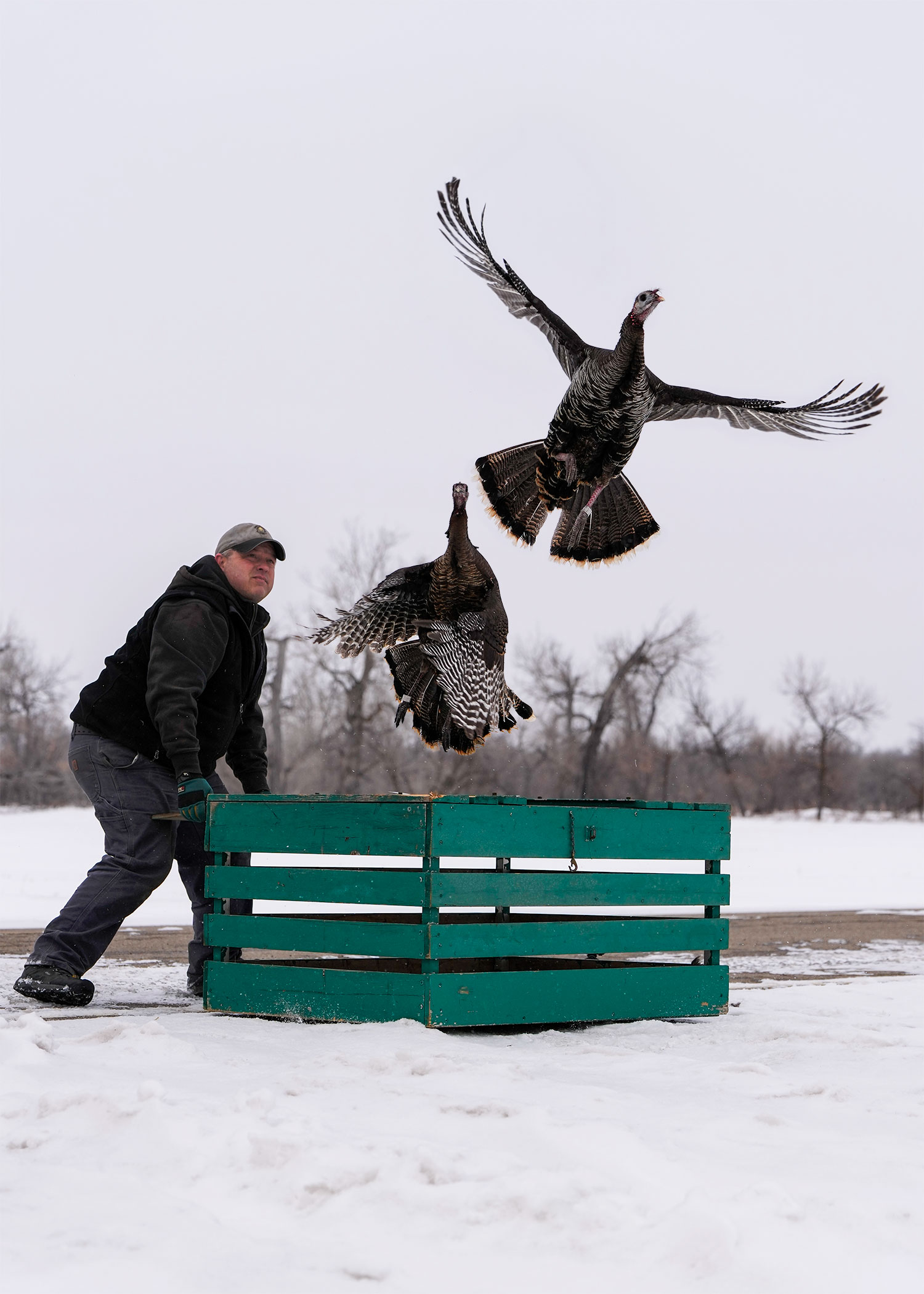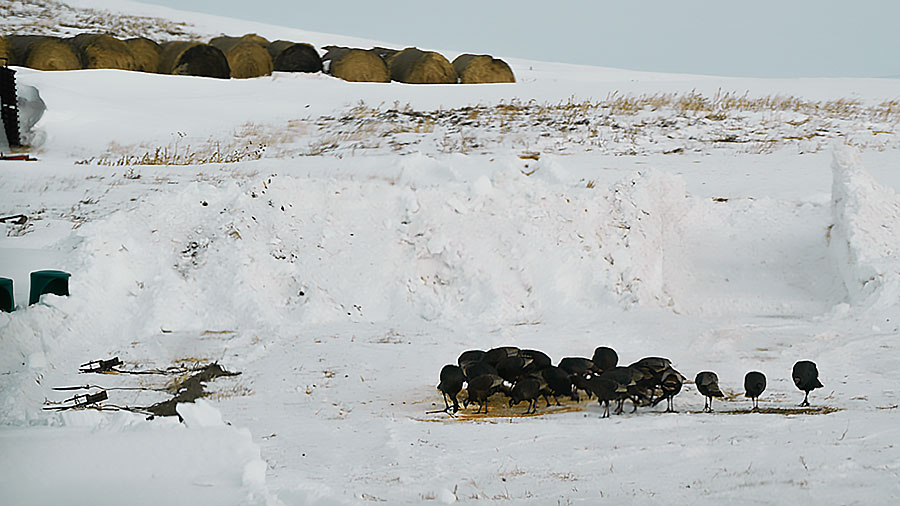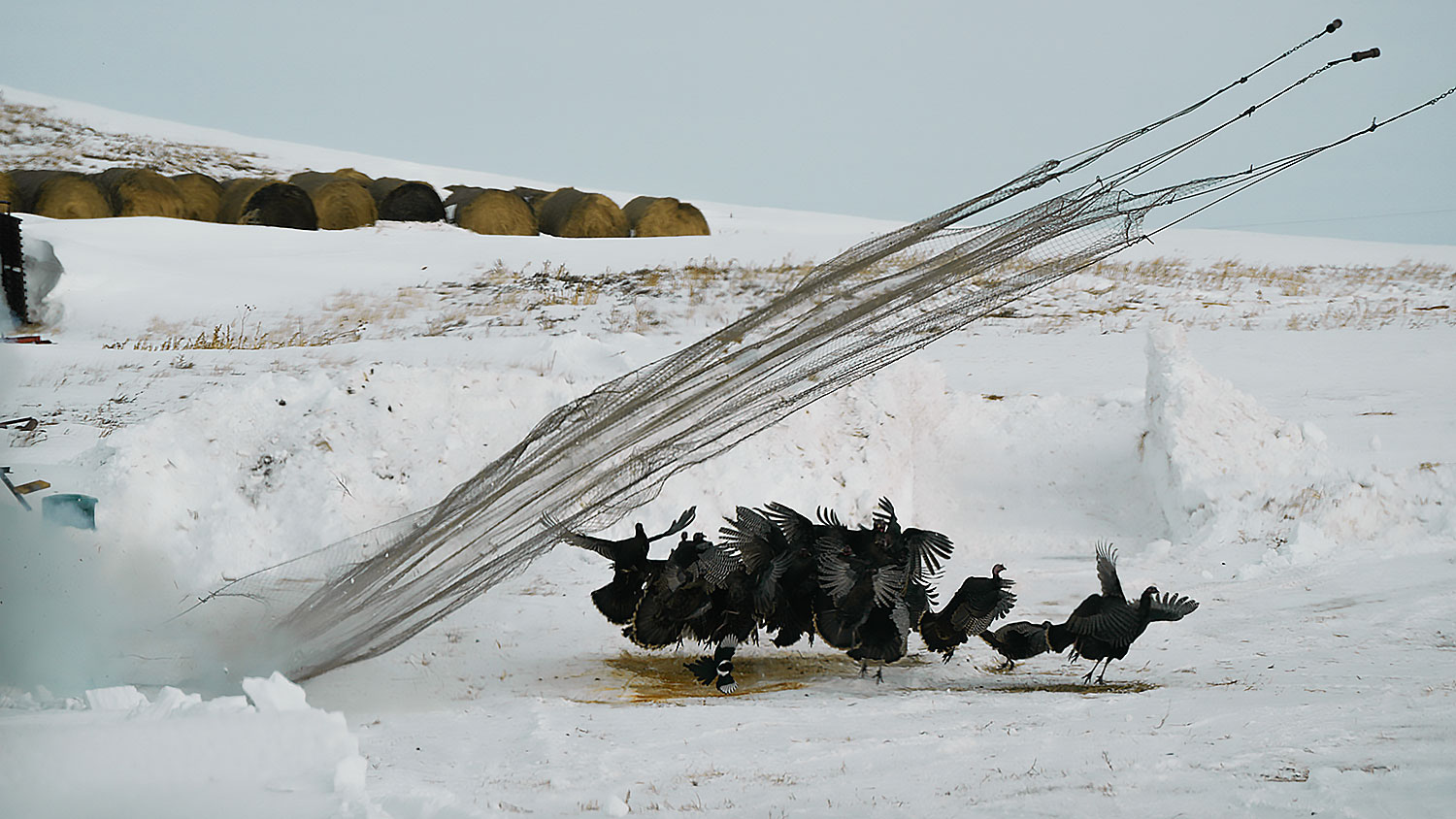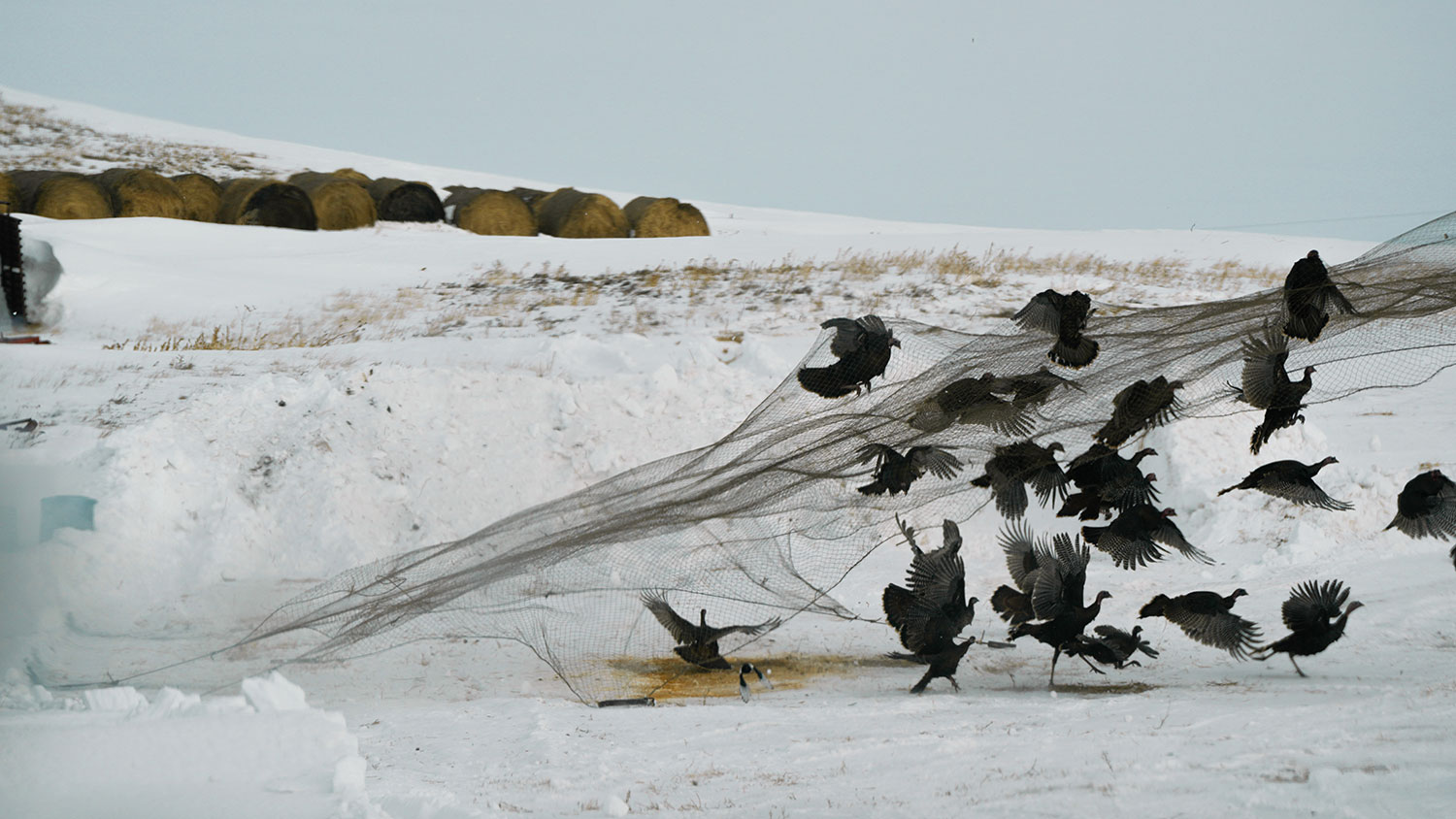Uncovering Turkey Unknowns
Ron Wilson

Nonnative wild turkeys have populated North Dakota’s landscape for more than 70 years after the first significant and successful introduction in the early 1950s.
While decades later these naked-headed birds occupy most available cover in the state from the badlands to North Dakota’s eastern terminus, there remains plenty of unknowns surrounding this respected game bird pursued by hunters for more than a half-century.
Rodney Gross, North Dakota Game and Fish Department upland game management biologist, said little research has focused on turkeys in the state, leaving biologists to take their best guesses on things such as home ranges, peak nesting season, seasonal movements and peak breeding period.
“If you don’t know things about the species you’re trying to manage, you’re kind of flying in the wind,” Gross said.
A five-year study, in conjunction with the University of North Dakota that kicked off earlier this winter, could answer these questions and others.
“This study could really open our eyes to a lot of different things that we didn’t know about turkeys in North Dakota,” Gross said.
Like a lot of research projects, the title of the study (Evaluating Survival and Movements of Translocated Wild Turkeys in North Dakota) is a mouthful, yet provides some insight into what researchers and biologists hope to learn.
This winter and next, Game and Fish Department personnel will employ rocket/drop nets to capture birds that have descended uninvited on private landowner feed supplies. The goal is to fit a total of 180 turkeys over the course of two winters with backpack-style GPS transmitters with VHF, which will allow researchers to track the birds.
While all of the marked turkeys will be tracked, Gross said some will be moved from the capture site and released at Department wildlife management areas and some, the control birds, will remain.
“The control birds remain because we want to see how they respond to having a big net shot over them and getting poked and prodded, as each turkey will have blood drawn,” Gross said. “Also, we want to see how far these turkeys are traveling to gather at these private feed sites. Are they resident birds within a mile or are they coming from 10-15 miles away?”

Capturing and relocating depredating turkeys is not something new to the Department. Game and Fish has been conducting a trap and transport program since 1996, and has relocated, on average, 200 turkeys from five sites a year.
Considering winter started in about mid-November with little indication of when it will end, the number of turkey depredation calls coming in this winter have outnumbered those from last year.
“Compared to last winter when there was little snow and we had maybe two to three depredation events, this winter we’ve already had 10 or 15,” Gross said. “And I see it’s supposed to get cold again … and I’m sure we’re not done with snowstorms. If we get much more snow, animals out there are really going to be in trouble and they’re going to be looking for that easy food.”
Once turkeys are trapped, fitted with GPS backpacks, leg bands and released, monitoring of their movements and whereabouts begins immediately. The bulk of this duty will fall on UND Ph.D. student, Cailey Isaacson, with help from Department personnel.
“She’ll be out right away this winter and check in on the birds from the road or the air from a Game and Fish plane,” Gross said. “But when it gets to springtime in that nesting/breeding season, then it’ll be more intense as far as the returns we can set on the collars. When it gets to be that breeding season, we might do, 10, 15, 20 reports per day.
Some of the specific questions biologists hope to answer from the study include:
- Do home ranges differ between translocated birds compared to those simply trapped and released at the depredation site?
- How far do translocated birds move from the release site? Do they stay on the WMA where they were released, or do they return to the original areas?
- How do survival rates compare between translocated turkeys and the control birds?
- Do hens nest after being transported?



